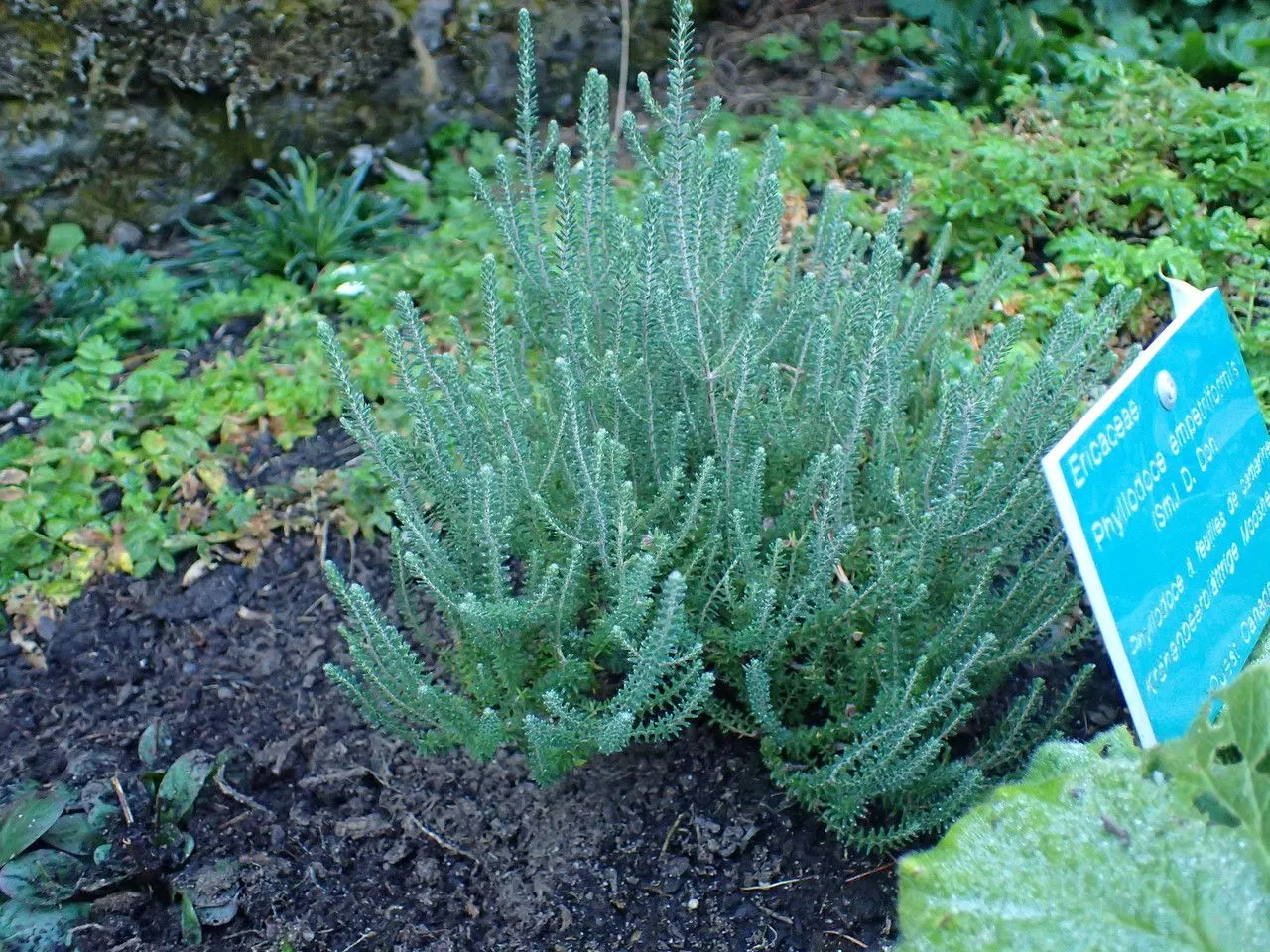
Author: (Sm.) D.Don
Bibliography: Edinburgh New Philos. J. 17: 160 (1834)
Year: 1834
Status: accepted
Rank: species
Genus: Phyllodoce
Vegetable: False
Observations: Subarctic Americ ato W. U.S.A.
Pink mountainheath, scientifically known as Phyllodoce empetriformis, is a charming and resilient shrub that enchants nature enthusiasts with its vivid display of pink blossoms and hardy nature. Found extensively from subarctic regions of America to the western United States, this plant is a testament to the beauty and adaptability of flora in rugged terrains.
Described initially in the Edinburgh New Philosophical Journal in 1834 by D.Don, based on the work of Sm., the pink mountainheath is a member of the Ericaceae family. This family is renowned for its wide variety of flowering plants, many of which thrive in harsh, acidic environments where few other species can survive.
Phyllodoce empetriformis is particularly admired for its robust, needle-like leaves and bell-shaped flowers that range in hue from deep pink to magenta. These flowers typically bloom in clusters, creating a striking contrast against the greenery of the alpine and subalpine regions where the plant is commonly found. The vibrant flowers of the pink mountainheath not only add splashes of color to the landscape but also play a crucial role in the local ecosystem. They attract pollinators such as bees and butterflies, contributing to the biodiversity and health of their natural habitats.
This plant is well-adapted to the cooler climates and often poor, rocky soils of its native regions. It thrives at high altitudes, where the growing season is short and conditions can be harsh. Yet, it stands as a symbol of perseverance and beauty in the wild, embodying the spirit of the rugged landscapes it inhabits.
For botanical enthusiasts and ecologists, pink mountainheath serves as an interesting subject of study. Its ability to flourish in less-than-ideal conditions can offer insights into plant resilience and adaptation. Additionally, its role in local ecosystems highlights the interconnectedness of plant and animal life in maintaining the balance of these environments.
Whether encountered while hiking in the mountains or studied for its ecological significance, Phyllodoce empetriformis leaves a lasting impression with its delightful appearance and ecological importance.
Swe: klocklappljung
Eng: mountain heath, pink mountainheath, red mountainheath, pink mountain heather, red mountain heather
Fra: phyllodoce à feuilles de camarine
En: Pink mountainheath, Pink Mountain-Heath, Mountain heath, RED MOUNTAINHEATH, Pink mountain heather, Pink mountainheather, Red mountain heather
Ar: خلنج الجبل الإنبطرني
Fi: Kellokurjenkanerva
Fr: Phyllodoce à feuilles de camarine
Ru: Филлодоце ерниковая
Sv: Klocklappljung
Taken Jul 6, 2007 by KP Laer (cc-by-sa)
Taken Aug 8, 2021 by Clara Wagner (cc-by-sa)
Taken Jul 26, 2021 by jacksun (cc-by-sa)
Taken Jul 5, 2021 by David Dodge (cc-by-sa)
Taken Jul 18, 2021 by Brielle Quon (cc-by-sa)
Taken Nov 9, 2015 by EOL − Donna Pomeroy (cc-by-nc)
Taken Nov 15, 2013 by EOL − Ben VanderWeide (cc-by-nc)
Taken Dec 26, 2014 by EOL − podiceps (cc-by-nc)
Taken Oct 30, 2016 by Yoan MARTIN (cc-by-sa)
Taken Oct 30, 2016 by Yoan MARTIN (cc-by-sa)
Taken Aug 23, 2020 by mathias (cc-by-sa)
Taken Sep 27, 2020 by поля (cc-by-sa)
Taken Aug 19, 2021 by jimmysong (cc-by-sa)
Taken Aug 8, 2021 by Clara Wagner (cc-by-sa)
Taken Oct 30, 2016 by Yoan MARTIN (cc-by-sa)
© copyright of the Board of Trustees of the Royal Botanic Gardens, Kew.
Growth habit>: Subshrub, Shrub
Family: Myrtaceae Author: (F.Muell.) K.D.Hill & L.A.S.Johnson Bibliography: Telopea 6: 402 (1995) Year: 1995 Status:…
Family: Rubiaceae Author: Pierre ex A.Froehner Bibliography: Notizbl. Bot. Gart. Berlin-Dahlem 1: 237 (1897) Year:…
Family: Sapindaceae Author: Koidz. Bibliography: J. Coll. Sci. Imp. Univ. Tokyo 32(1): 38 (1911) Year:…
Family: Asteraceae Author: A.Gray Bibliography: Pacif. Railr. Rep.: 107 (1857) Year: 1857 Status: accepted Rank:…
Family: Fabaceae Author: Medik. Bibliography: Vorles. Churpfälz. Phys.-Ökon. Ges. 2: 398 (1787) Year: 1787 Status:…
Family: Aspleniaceae Author: (Cav.) Alston Bibliography: Bull. Misc. Inform. Kew 1932: 309 (1932) Year: 1932…